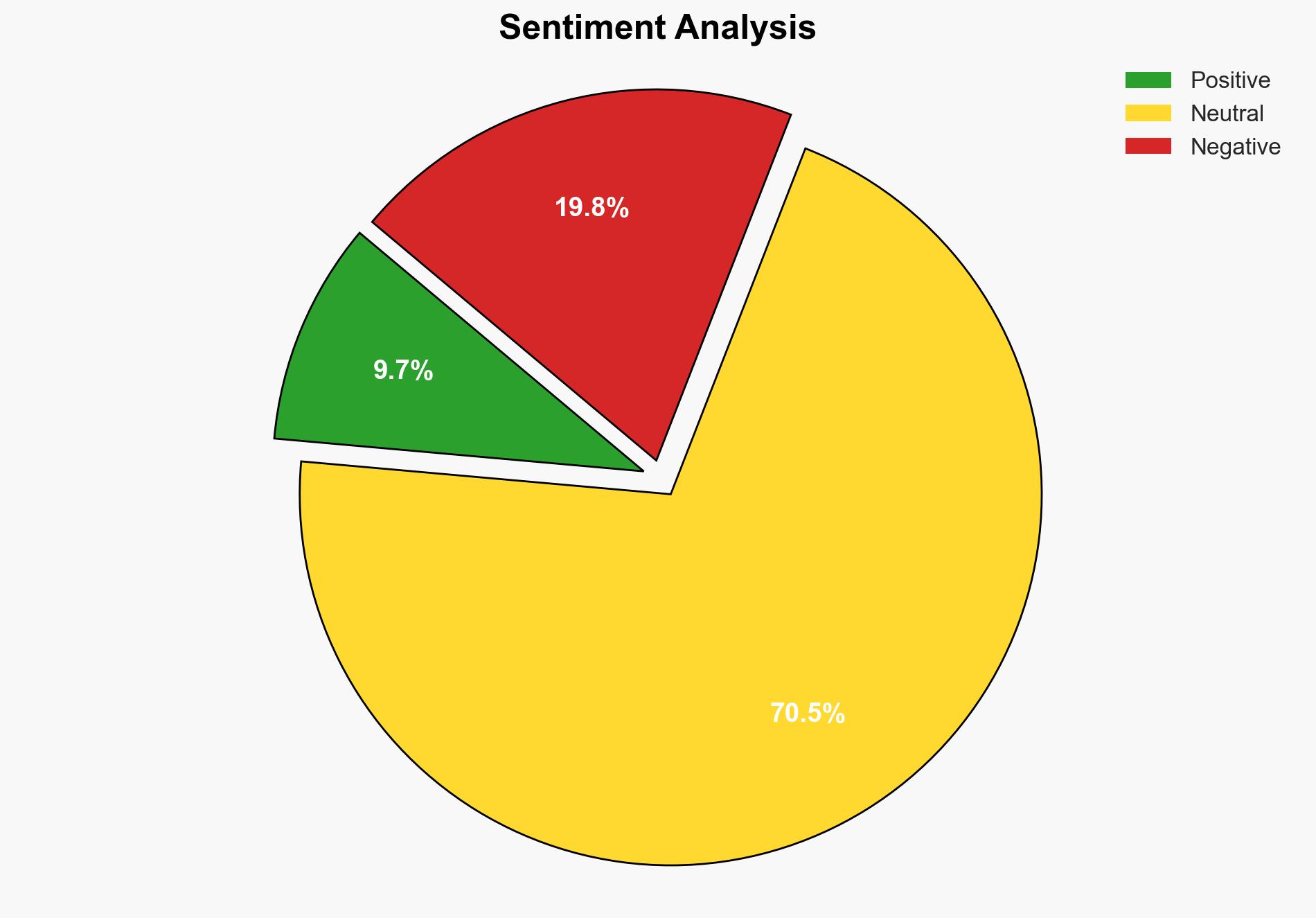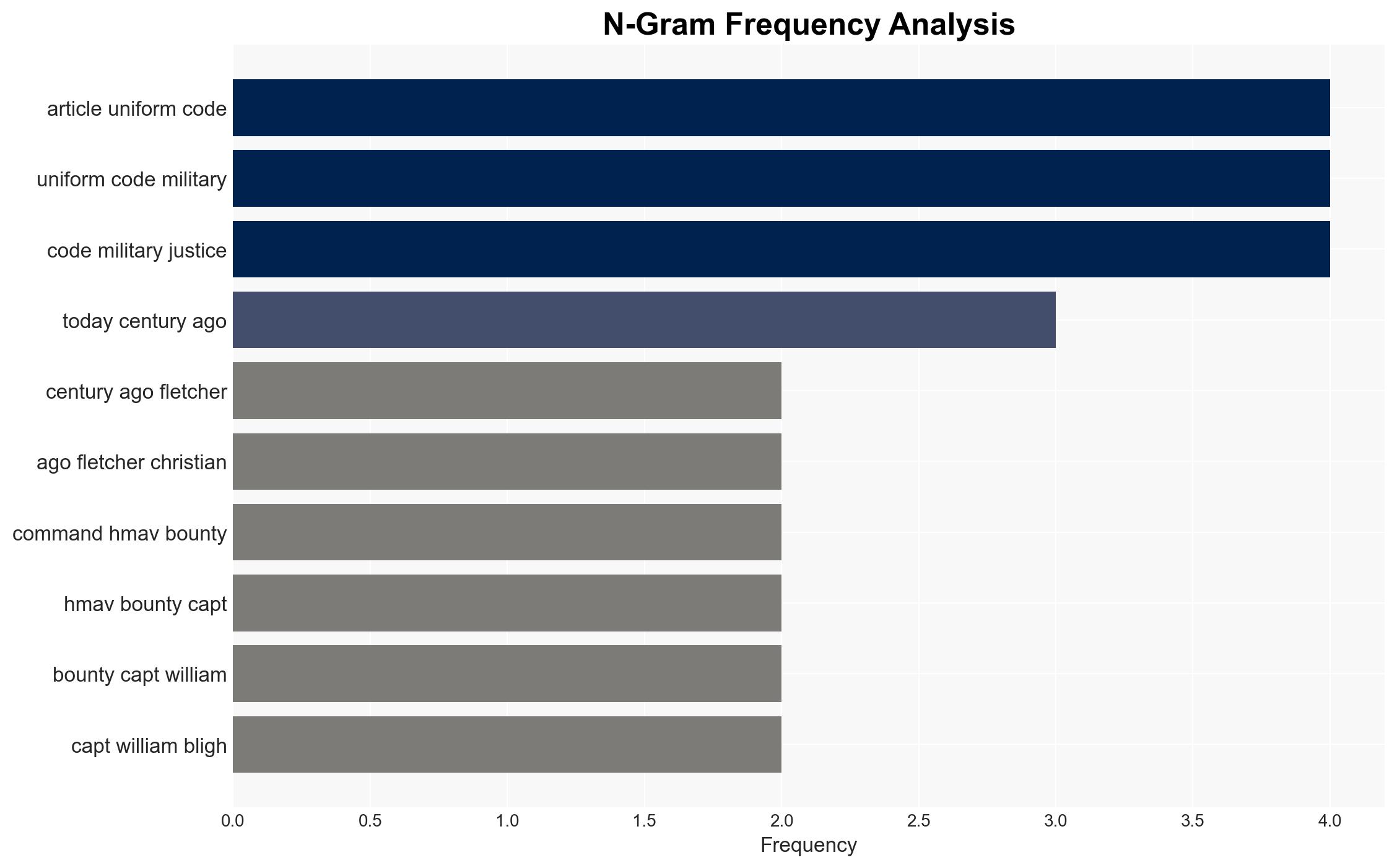None Dare Call It Mutiny – Daily Signal
Published on: 2025-11-20
AI-powered OSINT brief from verified open sources. Automated NLP signal extraction with human verification. See our Methodology and Why WorldWideWatchers.
Intelligence Report:
1. BLUF (Bottom Line Up Front)
The strategic analysis suggests a medium confidence level in the hypothesis that recent political rhetoric encouraging military disobedience is unlikely to result in widespread mutiny but poses a risk of undermining military discipline and cohesion. Recommended actions include reinforcing the legal framework governing military obedience and enhancing communication strategies to address misinformation.
2. Competing Hypotheses
Hypothesis 1: The rhetoric encouraging military disobedience will lead to a significant breakdown in military discipline, potentially resulting in mutiny.
Hypothesis 2: The rhetoric is primarily political posturing with limited impact on actual military behavior, but it risks eroding trust and discipline within the ranks.
The second hypothesis is more likely, given historical precedence and the structured nature of military command. While the rhetoric is concerning, the military’s ingrained culture of obedience and legal frameworks are robust deterrents against widespread disobedience.
3. Key Assumptions and Red Flags
Assumptions: It is assumed that military personnel are generally well-versed in the legal obligations of their service and the consequences of disobedience.
Red Flags: The use of incendiary language by political figures could be a deliberate attempt to sow discord. The potential for misinterpretation of orders by lower-ranking personnel is a concern.
4. Implications and Strategic Risks
The primary risk is the erosion of trust between military personnel and civilian leadership, which could lead to a decrease in morale and effectiveness. Politically, this rhetoric could polarize military and civilian relations further, impacting national security policy implementation. If unchecked, this could escalate into cyber campaigns targeting military communications and misinformation spreading within the ranks.
5. Recommendations and Outlook
- Reinforce training on the Uniform Code of Military Justice (UCMJ) and the importance of lawful orders.
- Develop strategic communication initiatives to counter misinformation and clarify legal obligations.
- Engage with political leaders to reduce incendiary rhetoric and promote constructive dialogue.
- Best-case scenario: Rhetoric subsides, and military discipline remains intact.
- Worst-case scenario: Increased incidents of disobedience leading to disciplinary actions and potential security risks.
- Most-likely scenario: Limited impact on military operations, but ongoing political discourse continues to challenge military-civilian relations.
6. Key Individuals and Entities
Chris Deluzio, Mark Kelly, Elissa Slotkin
7. Thematic Tags
Cybersecurity, Military Discipline, Political Rhetoric, National Security
Structured Analytic Techniques Applied
- Adversarial Threat Simulation: Model and simulate actions of cyber adversaries to anticipate vulnerabilities and improve resilience.
- Indicators Development: Detect and monitor behavioral or technical anomalies across systems for early threat detection.
- Bayesian Scenario Modeling: Quantify uncertainty and predict cyberattack pathways using probabilistic inference.
Explore more:
Cybersecurity Briefs ·
Daily Summary ·
Support us





